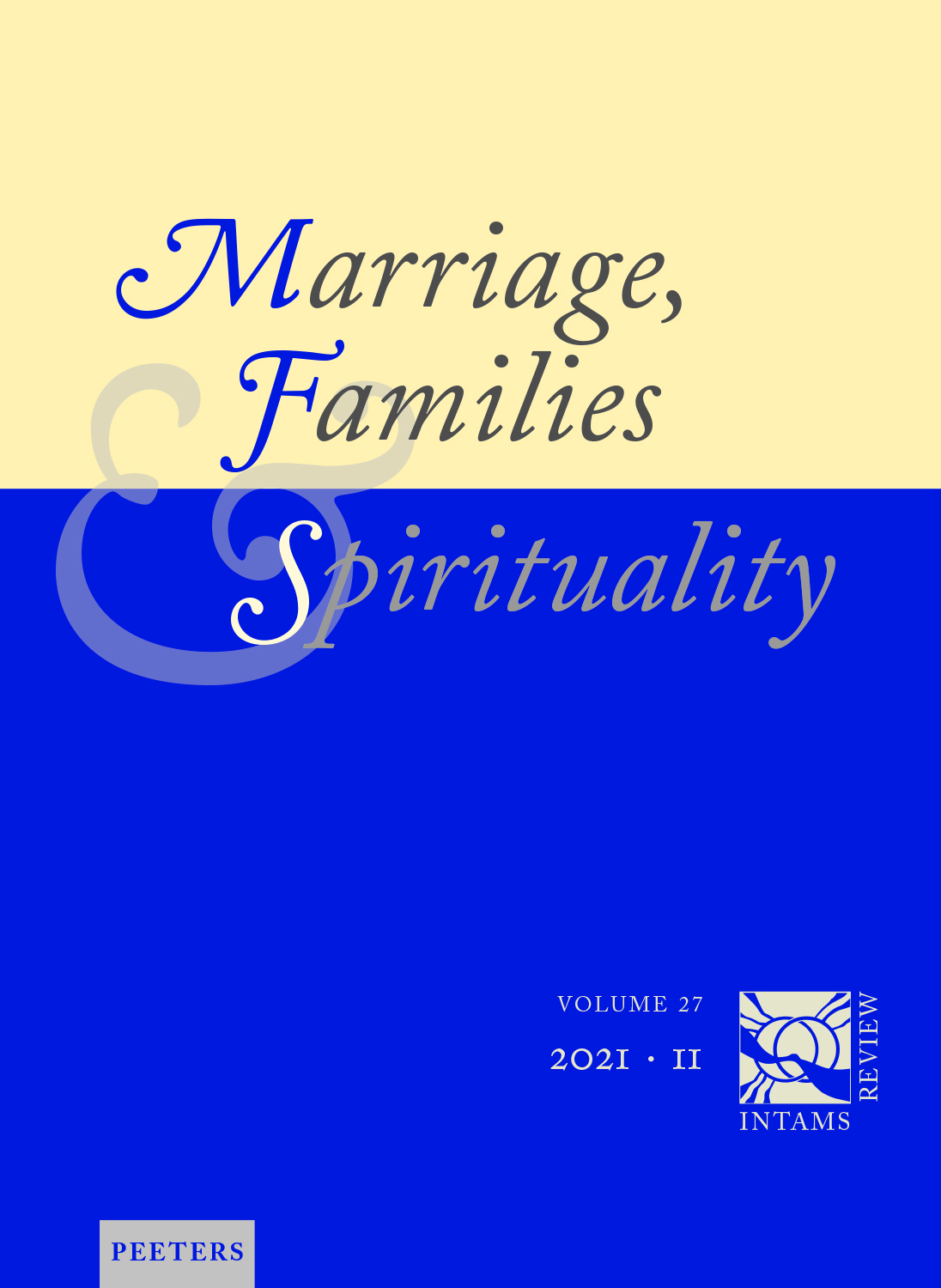 previous article in this issue previous article in this issue | next article in this issue  |

Preview first page |
Document Details : Title: On Married Men and Women in the Congregation Subtitle: The Marriage Paraenesis in Eph 5,21-33 Author(s): FORDERER, Tanja Journal: Marriage, Families & Spirituality Volume: 30 Issue: 2 Date: 2024 Pages: 254-273 DOI: 10.2143/INT.30.2.3293779 Abstract : The marriage passage in the Ephesians Haustafel in Eph 5,21-33 is one of the later texts in the New Testament that says something about marriage in the first Christian congregations in the broadest sense. The argument presupposes the social hierarchy between men and women in a marriage or marriage-like unions that was widespread in the ancient world. It aims to make different behaviors towards their partners plausible for men and women. Eph 5,21-33 advocates the subordination of wives to their husbands and the love of husbands for their wives, which can be concretized as care. Once again, the marriage passage ties in with ancient concepts, this time with role expectations for wives and husbands towards their partners. Interestingly, the behaviors required of women and men in the congregation who are married or in a marriage-like relationship are justified with statements about Christ and his ecclesia. The linking of the two relationships serves as an example of Christ and his ecclesia to the members of the congregation addressed. Furthermore, in the argumentation the relationship between Christ and ecclesia is conceptualized in a figurative way as a marriage and interpret it with Gen 2,24. The reception of Gen 2,24 in this context is rather surprising, as the verse was interpreted in ancient Judaism as referring to a marriage between a man and a woman, among other things. Eph 5,32, however, relates the verse to Christ and his ecclesia and thus expresses the lasting unity of both. This article analyzes the argumentation of Eph 5,21-33 and focuses on the progression of the argumentation and the argumentative entanglement of the relationships man-woman and Christ-ecclesia. This includes important motifs that are characteristic of the letter to the Ephesians as well as socio-historical and historical information about the ancient way of life. |
 |


